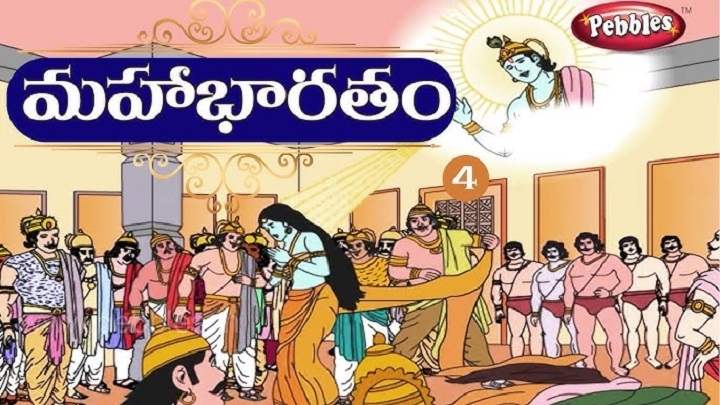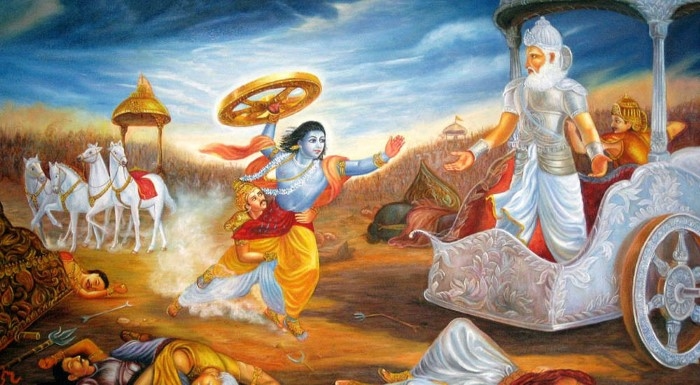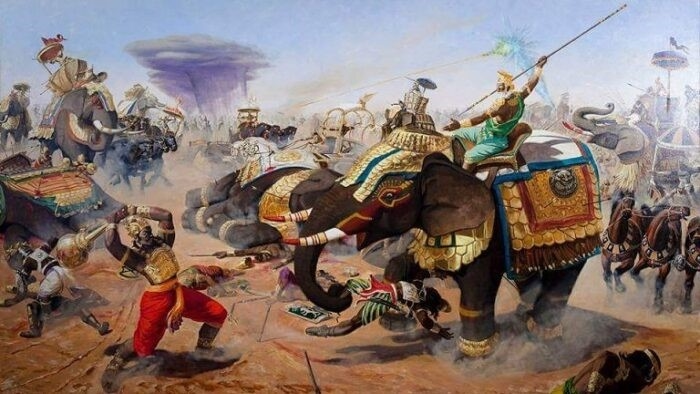The Mahabharatham is one of the greatest epics in world literature, recounting the intense struggle between two sets of royal cousins, the Pandavas and the Kauravas. Originating in Sanskrit, this monumental work by Vyasa has been translated into several languages, including Telugu. The Mahabharatham story in Telugu continues to inspire and captivate audiences across generations, providing insights into human nature, morality, duty (Dharma), and the consequences of actions.
The story, though centered around the battle of Kurukshetra, also includes elements of philosophy, mythology, devotion, and spirituality. For Telugu-speaking audiences, the tale of the Mahabharatham is not just an epic; it’s a cultural and spiritual legacy that has influenced literature, theater, and religious practices in the region.
The Story of Mahabharatham: An Overview
The plot of the Mahabharatham revolves around the conflict between the Pandavas and Kauravas, two families who are both descendants of the great Bharata dynasty. It all starts when Dhritarashtra, the blind king of the Kuru kingdom, has two sons, Duryodhana and Dushasana. The Pandavas, sons of King Pandu, are five brothers: Yudhishthira, Bhima, Arjuna, Nakula, and Sahadeva.
The Kauravas, led by Duryodhana, are jealous of the Pandavas’ success and the love they receive from the people. The rivalry leads to deceit, betrayal, and ultimately war. However, the battle of Kurukshetra is not just a clash of armies; it symbolizes the eternal fight between good and evil, righteousness and sin.
The Pandavas and Their Trials
The story of the Pandavas is filled with challenges, both external and internal. They begin their life in exile when Duryodhana, the eldest Kaurava, tricks Yudhishthira into a game of dice. In this game, the Pandavas lose their kingdom, their wealth, and even their freedom. They are forced into a 13-year exile, the last year of which must be spent in hiding.
During their exile, the Pandavas experience spiritual growth, particularly Arjuna, who embarks on a pilgrimage to acquire celestial weapons. The wisdom and guidance they receive during this time shape their character and prepare them for the eventual war against the Kauravas.
The Kurukshetra War
After their exile ends, the Pandavas return to claim their share of the kingdom. However, Duryodhana refuses to part with even a small portion of the land. This leads to the infamous Kurukshetra war, a battle fought between the Pandavas and the Kauravas, with alliances from neighboring kingdoms.
The war is a momentous event in the epic, as it witnesses the deaths of many great warriors, including Bhishma, Drona, and Karna. Throughout the war, Arjuna’s struggle with his duty (Dharma) becomes a central theme. At the start of the battle, he is filled with doubt and reluctance to fight his own family members. This internal conflict is resolved through the divine intervention of Lord Krishna, who serves as Arjuna’s charioteer and imparts the teachings of the Bhagavad Gita, a spiritual and philosophical guide to life.
Key Characters in Mahabharatham
Yudhishthira: The Righteous King
Yudhishthira, the eldest of the Pandavas, is often regarded as the embodiment of Dharma. Despite facing numerous trials, he remains committed to truth and justice. His leadership skills and moral compass make him the rightful heir to the throne.
Bhima: The Strongest Warrior
Bhima, the second Pandava, is known for his immense strength. His fierce loyalty to his family and his indomitable courage make him a key figure in the war. Bhima’s role in avenging the deaths of his brothers and taking on the Kaurava army’s most formidable warriors is legendary.
Arjuna: The Archer of Destiny
Arjuna is a master archer and the most skilled warrior of the Pandavas. His story is integral to the epic, with his encounter with Lord Krishna in the Bhagavad Gita being one of the most revered moments in Hindu philosophy. Arjuna’s doubts and transformation into a decisive warrior are central to the Mahabharatham’s message.
Draupadi: The Queen of the Pandavas
Draupadi, the wife of the Pandavas, plays a crucial role in the epic. Her public humiliation in the Kaurava court sets off a chain of events that leads to the Kurukshetra war. Draupadi’s strength, grace, and unwavering loyalty to her husbands make her an iconic figure in the Mahabharatham.
Karna: The Tragic Hero
Karna, the greatest warrior on the Kaurava side, is one of the most tragic characters in the epic. Born to Kunti (the mother of the Pandavas) before her marriage, Karna is raised by a charioteer’s family. His loyalty to Duryodhana, despite knowing his true origins, and his tragic fate make him a symbol of honor, sacrifice, and destiny.
Major Themes and Lessons from Mahabharatham
The Battle of Good vs. Evil
At its core, the Mahabharatham is a narrative of the eternal struggle between good and evil. The Pandavas represent righteousness, while the Kauravas stand for deceit, greed, and selfishness. The epic underscores that no matter how strong evil may seem, righteousness will ultimately triumph.
The Importance of Dharma
Dharma, or duty, is the central theme of the Mahabharatham. The characters face numerous moral dilemmas, and their choices are shaped by their understanding of what is right. The teachings of the Bhagavad Gita, particularly Arjuna’s dialogue with Krishna, emphasize the importance of adhering to one’s duty, even in the face of hardship.
The Impact of Choices
One of the profound lessons from the Mahabharatham is the impact of choices. Each character’s fate is determined by the choices they make. Whether it is Duryodhana’s jealousy or Arjuna’s decision to fight, the actions of the characters shape their destinies and have far-reaching consequences.
Mahabharatham in Telugu Culture
The Mahabharatham story in Telugu has been passed down through generations, not only as a historical and spiritual account but also as a cultural treasure. It has been narrated through various mediums, such as folk songs, stage performances, and television adaptations. In particular, the Telugu version of the Mahabharatham is known for its emotional depth and philosophical discussions.
Influence on Telugu Literature
The Mahabharatham has had a significant influence on Telugu literature, with numerous poets and scholars drawing inspiration from its themes and characters. The epic has been retold in various formats, including plays, short stories, and poems, all of which have kept the spirit of the original alive.
Modern Adaptations
In contemporary times, the Mahabharatham has been adapted into several Telugu films and television shows. These adaptations often bring new perspectives to the ancient tale, making it more accessible to modern audiences while preserving the essence of the story.
FAQs
What is the central theme of the Mahabharatham?
The central theme of the Mahabharatham is the battle between good and evil, embodied by the conflict between the Pandavas and Kauravas. The epic also explores themes like Dharma (righteousness), the consequences of choices, and the importance of duty.
Who is the hero of Mahabharatham?
While the Mahabharatham has several heroic figures, Arjuna is often regarded as the primary hero due to his prowess as a warrior and his moral struggles, especially during the Bhagavad Gita dialogue with Krishna.
How many parts are there in the Mahabharatham?
The Mahabharatham consists of 18 books or parvas, each detailing different events, characters, and lessons. These parvas are further divided into chapters that elaborate on the teachings, moral dilemmas, and the eventual war.
What is the significance of Draupadi in the Mahabharatham?
Draupadi, the wife of the Pandavas, plays a pivotal role in the Mahabharatham. Her disrobing in the Kaurava court and her call for justice are key events that lead to the Kurukshetra war. She represents strength, dignity, and the power of womanhood.
Why is Karna considered a tragic hero?
Karna is considered a tragic hero because, despite his skills and virtues, his fate is sealed by circumstances beyond his control. His loyalty to Duryodhana, his secret origins, and his tragic death on the battlefield make him a symbol of fate and honor.
The Mahabharatham is more than just a story of war; it is a profound exploration of life, duty, and destiny. Through its complex characters and intricate narrative, the epic imparts timeless lessons that continue to resonate in modern society. The Mahabharatham story in Telugu preserves the cultural and spiritual essence of the ancient epic, ensuring that its teachings continue to inspire future generations.



